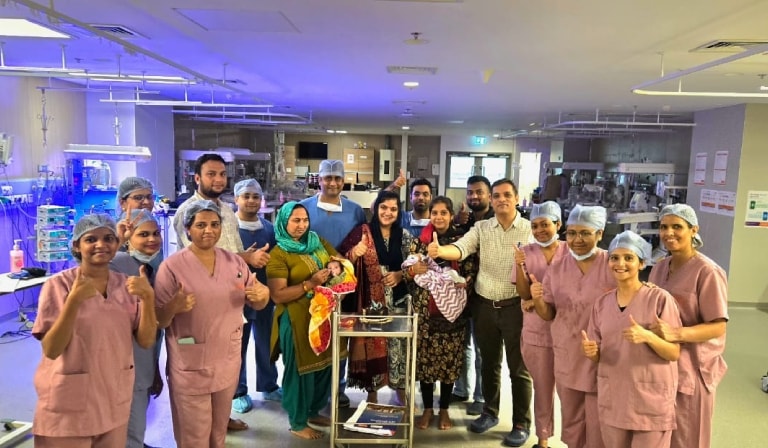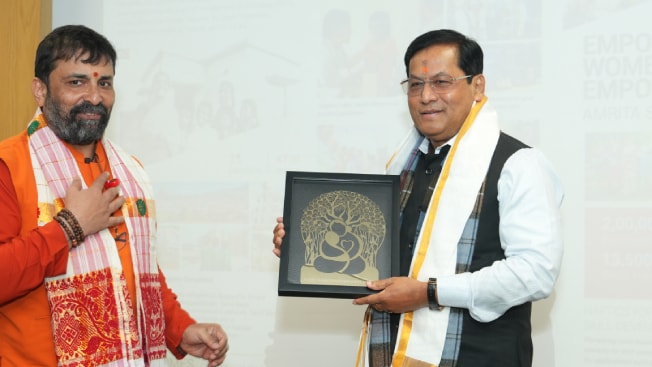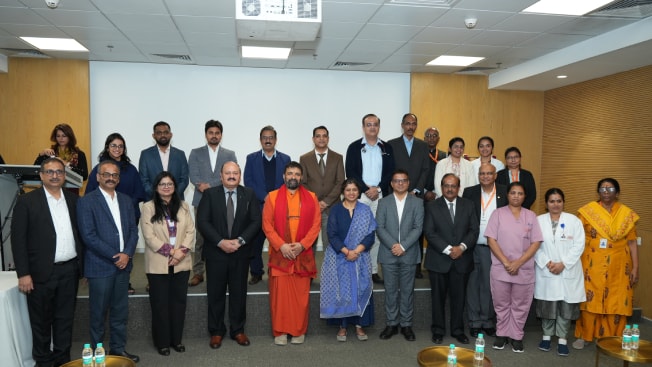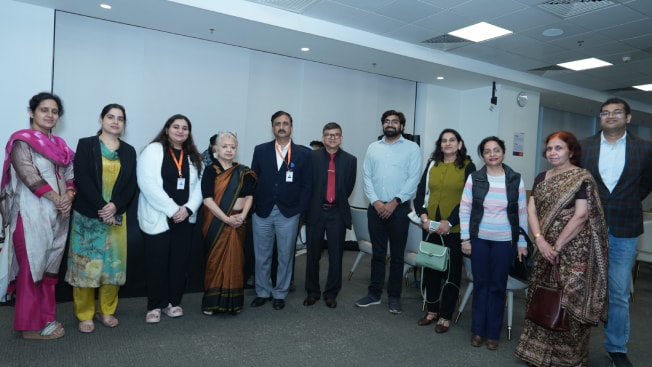
It sounds like a medical thriller — but it’s real. At Amrita Hospital, Faridabad, five newborn babies, over the last three months, who were born with their liver, intestines, kidneys, and stomach inside their chest have been saved after marathon surgeries and weeks of newborn intensive care.
Despite the odds, Amrita Hospital’s Pediatric surgical, Neonatal & pediatric intensive care teams have come together and provided modern surgical as well as post-surgical management with all five babies discharged and thriving. Among these newborn babies, 4 of them were left-sided CDH and had relatively smoother recoveries though associated with mild to moderate pulmonary hypertension. while 2 of these were pre-term and low birth weight babies but One of them was Right-sided CDH with significant liver herniation and severe pulmonary hypertension, however, required heroic surgical precision and many days of ventilator support but baby is now breathing on his own after being weaned off the ventilator — a victory doctors describe as nothing short of a miracle.
“Right sided congenital diaphragmatic hernia, an operative challenge”
Baby was late preterm and low birth weight (Birth weight was 2100gms). Antenatal scans were done that suggested some anomaly on right side of chest. Baby developed severe respiratory distress immediately after the birth and had to be intubated. During surgical intervention the entire liver was intra-thoracic along with intestinal loops. Liver was twisted in the thoracic cavity. Stomach and Spleen were found in the abdomen. Only a thin rim of diaphragm on the anterior aspect was present, and the posterior rim was absent. The right lung was very small in size. The liver could be brought down to the abdomen with difficulty, and the intestinal loops were reduced. Repair of the diaphragm was achieved by intricate high precision surgical technique using pleura and local muscle flaps. The abdomen was closed primarily with some tension as the abdominal cavity is already small. Post operatively baby was returned to NICU and kept on High Frequency Oscillatory Ventilation. Atracurium infusion was started and infant was kept paralyzed for initial four days. The baby was started on Nasogastric Feed on the fifth post operative day and gradually increased. After a roller-coaster ride in intensive care unit and against all odd baby survived miraculously.
Dr. Nitin Jain, Senior Consultant & Head, Pediatric Surgery, Amrita Hospital, Faridabad --“These are battles fought hour by hour. Congenital diaphragmatic hernia doesn’t just compress the fetal lung but also prevent its development and expansion with resultant pulmonary hypertension. In severe cases it can cause significant shift of mediastinum including heart to the opposite side and disturbs the development of opposite lung as well. Right-sided cases with the liver inside the chest, CDH with very large defect size, and severe pulmonary hypoplasia, are the ultimate surgical challenge. But we refused to give up. What you see today are babies who were given a second birth through medicine, technology, and sheer determination.”
Many cases nowadays are getting diagnosed prenatally during antenatal screening or follow-up ultrasounds. Prenatal diagnosis is considered very important since it optimizes prenatal and postnatal care of both mother and fetus as well as allows mother to be transferred to a tertiary pediatric surgical centre before birth.
One family described their journey as an emotional rollercoaster --“When doctors told us our baby’s liver and intestines were in the chest, it felt like a death sentence. Every day in the ICU we prayed for a miracle. And today, watching him breathe, feed, and smile is that miracle. For us, this is truly our child’s second birth. We can never thank the doctors enough.”
- Congenital Diaphragmatic Hernia (CDH) is a condition where diaphragm is not developed that causes abdominal organs to slip into the chest cavity, putting significant pressure over the developing lungs and shifting the heart.
- In 80-85% of cases CDH is on the left side and relatively uncommon on the right side with an incidence of around 10-15%. Right-sided cases especially when the liver herniates or when significant portion of diaphragm is absent, when lung development is severely compromised — are considered the toughest and utmost challenging in pediatric surgery.
- In India, an estimated 33–50 babies per 100,000 births face CDH.
- Survival rates in resource-limited settings can dip below 40%, especially in right-sided cases.
- At Amrita Hospital, survival in high-risk cases has defied global averages — bringing hope to families who once thought they had none.
Doctors caution that long-term monitoring is crucial, as pulmonary hypertension, delayed growth, and feeding difficulties can persist. But with aggressive ICU support and follow-up, many CDH babies can live healthy lives.
Amrita Hospital, Faridabad, has now become a beacon of hope for families across India, tackling some of the most complex newborn surgical cases with results that border on the miraculous.


